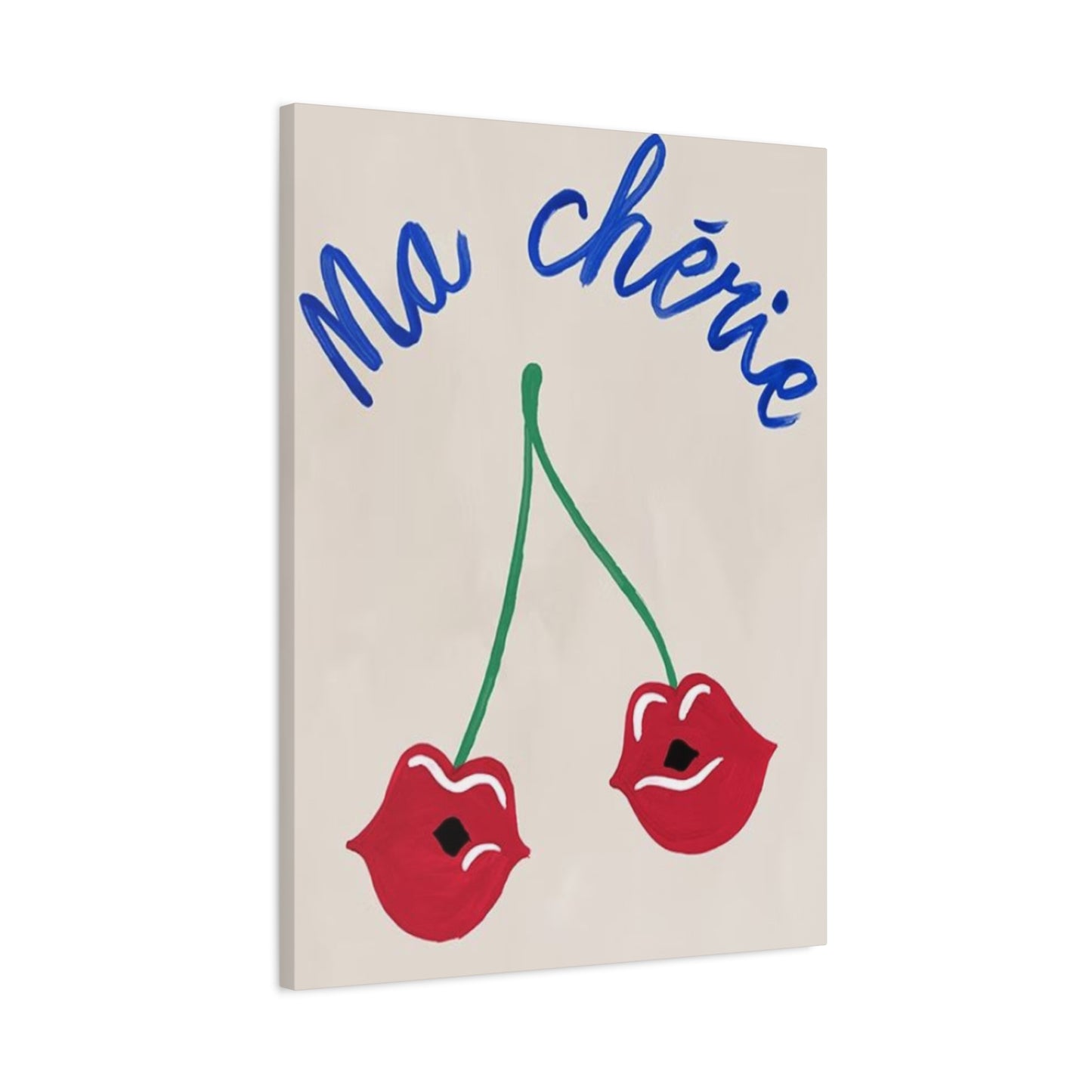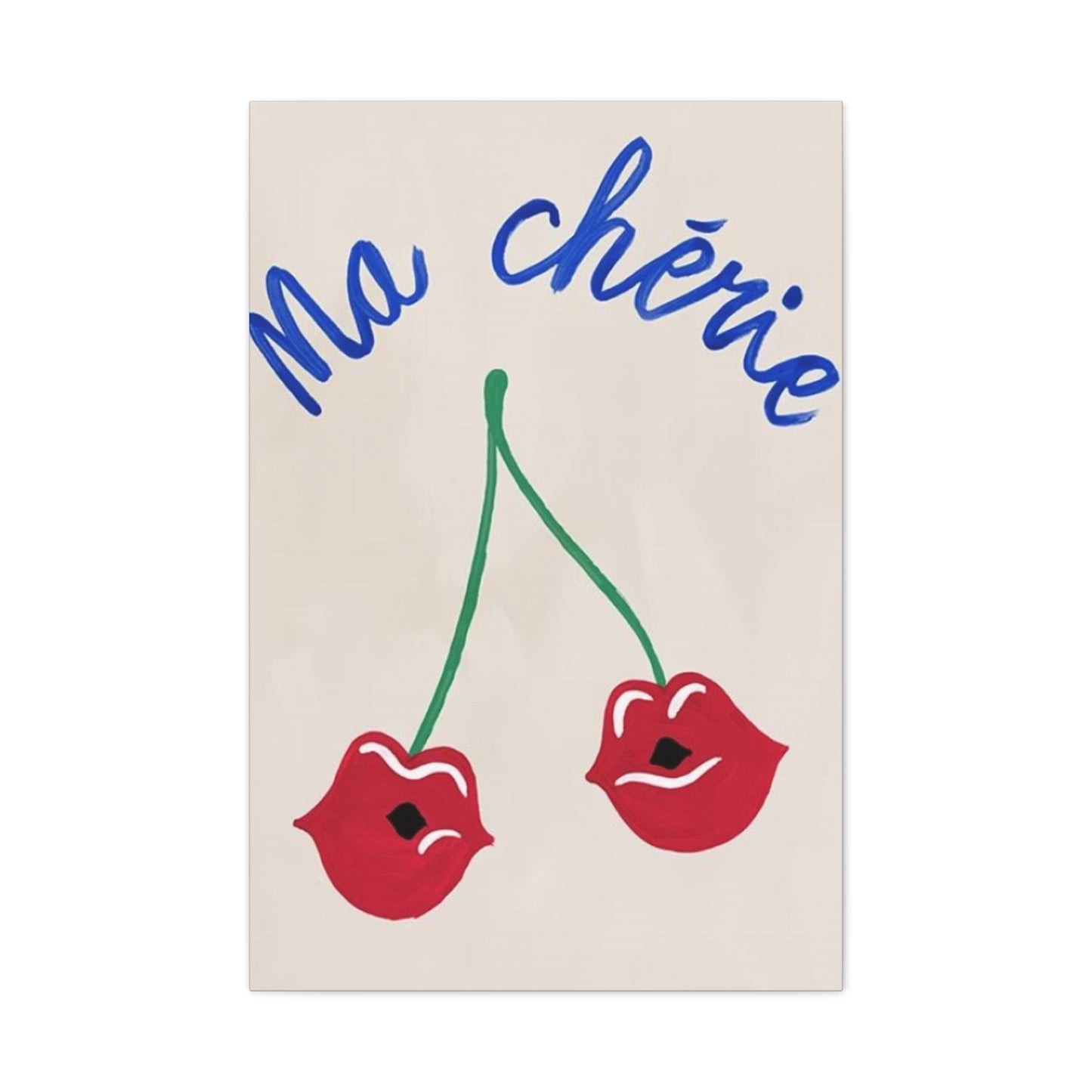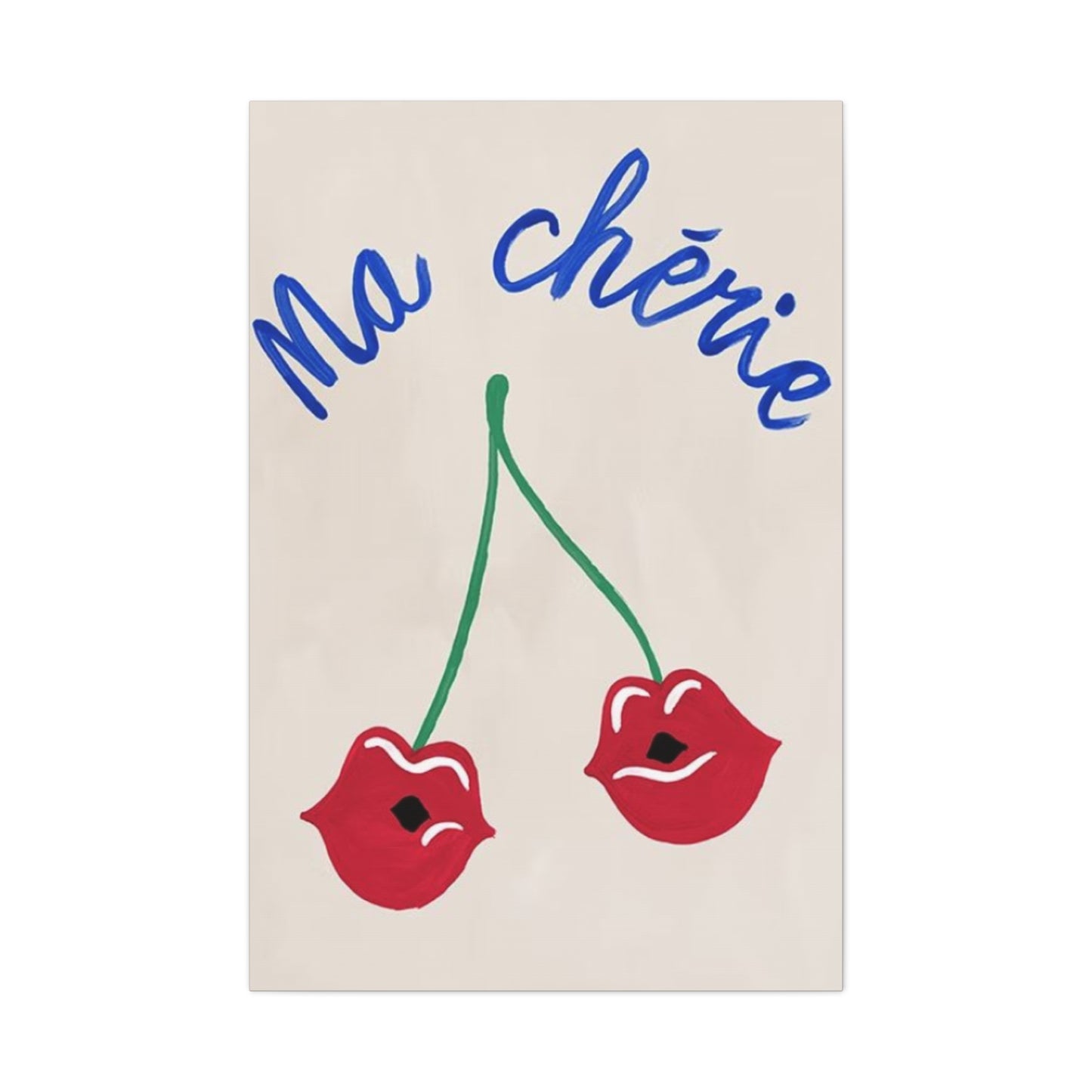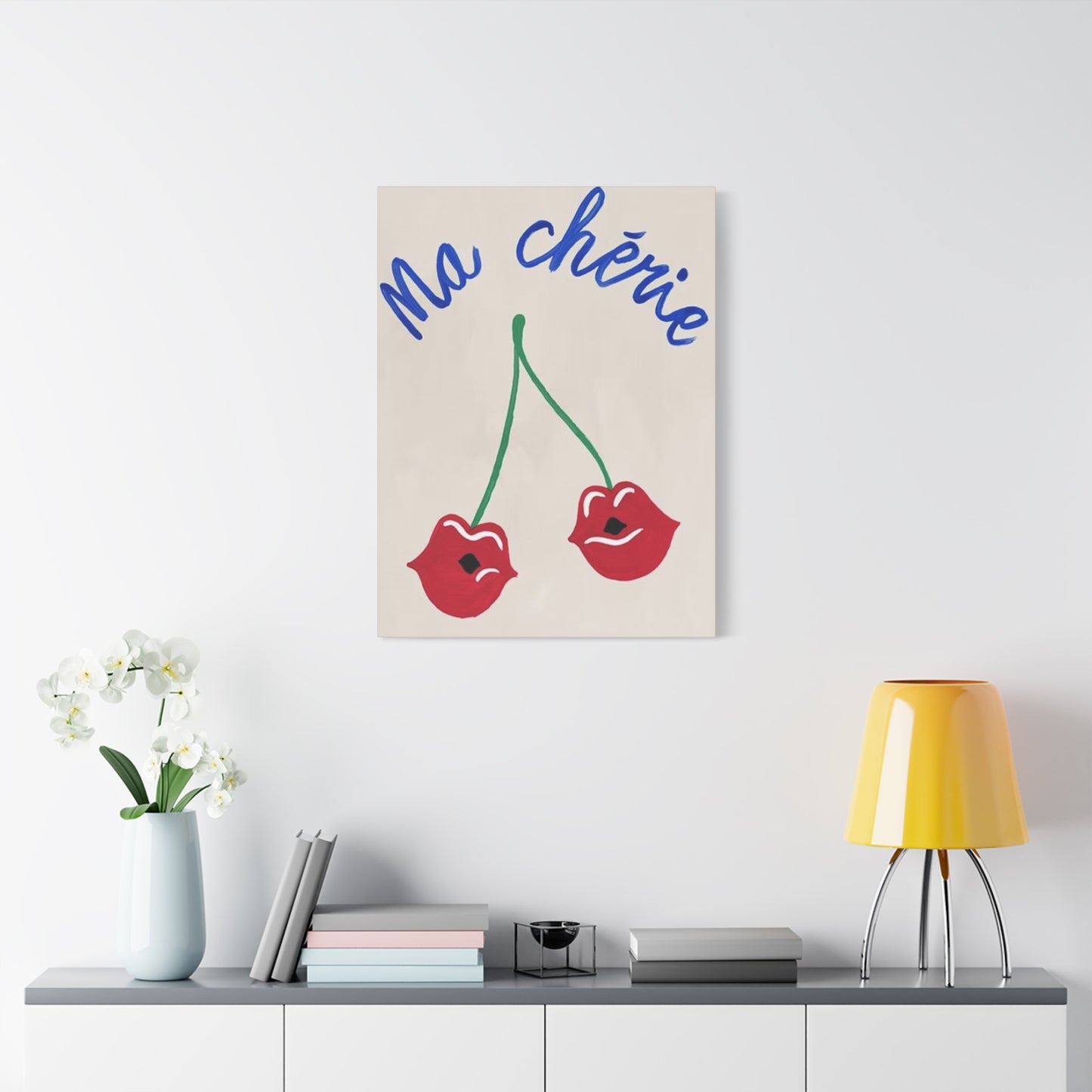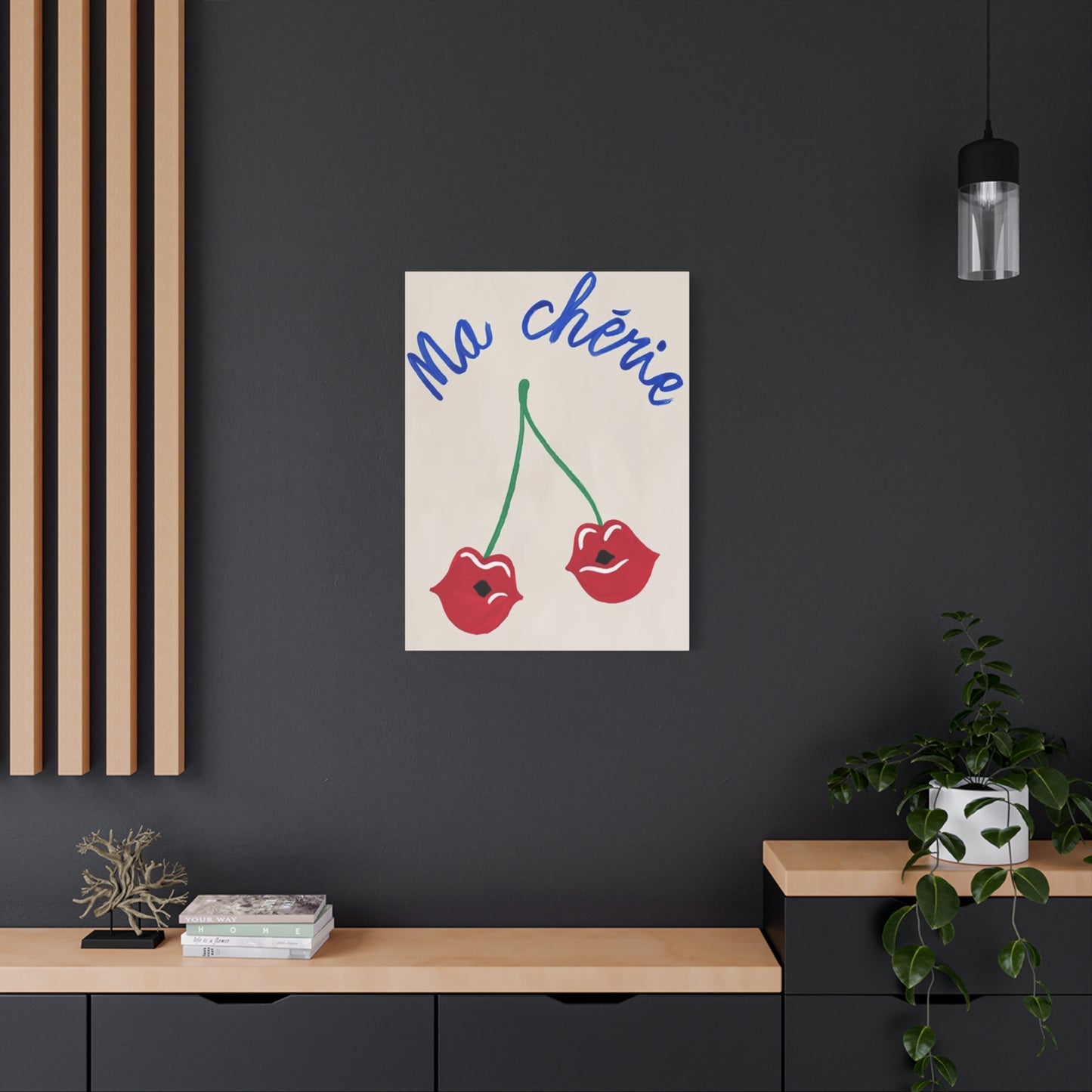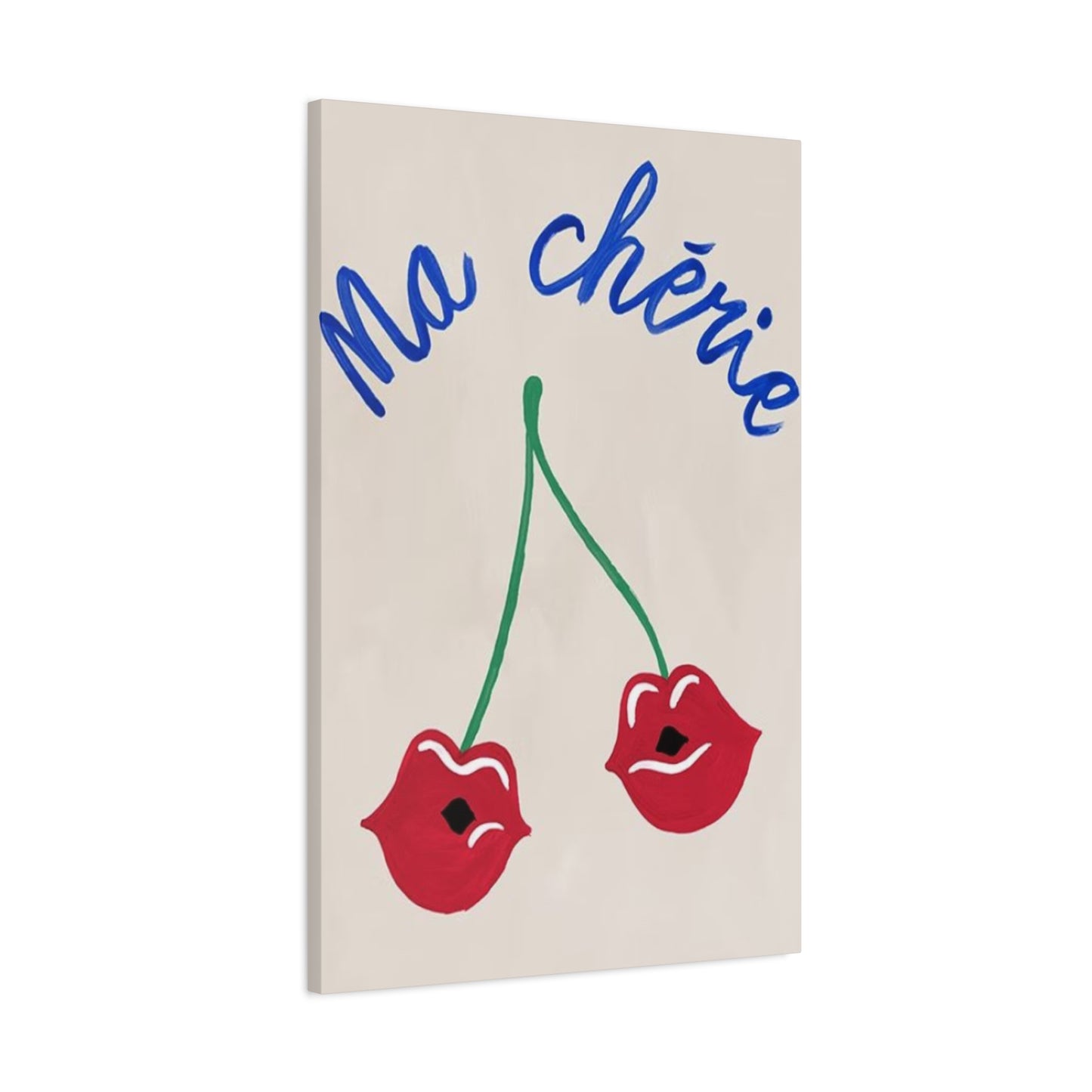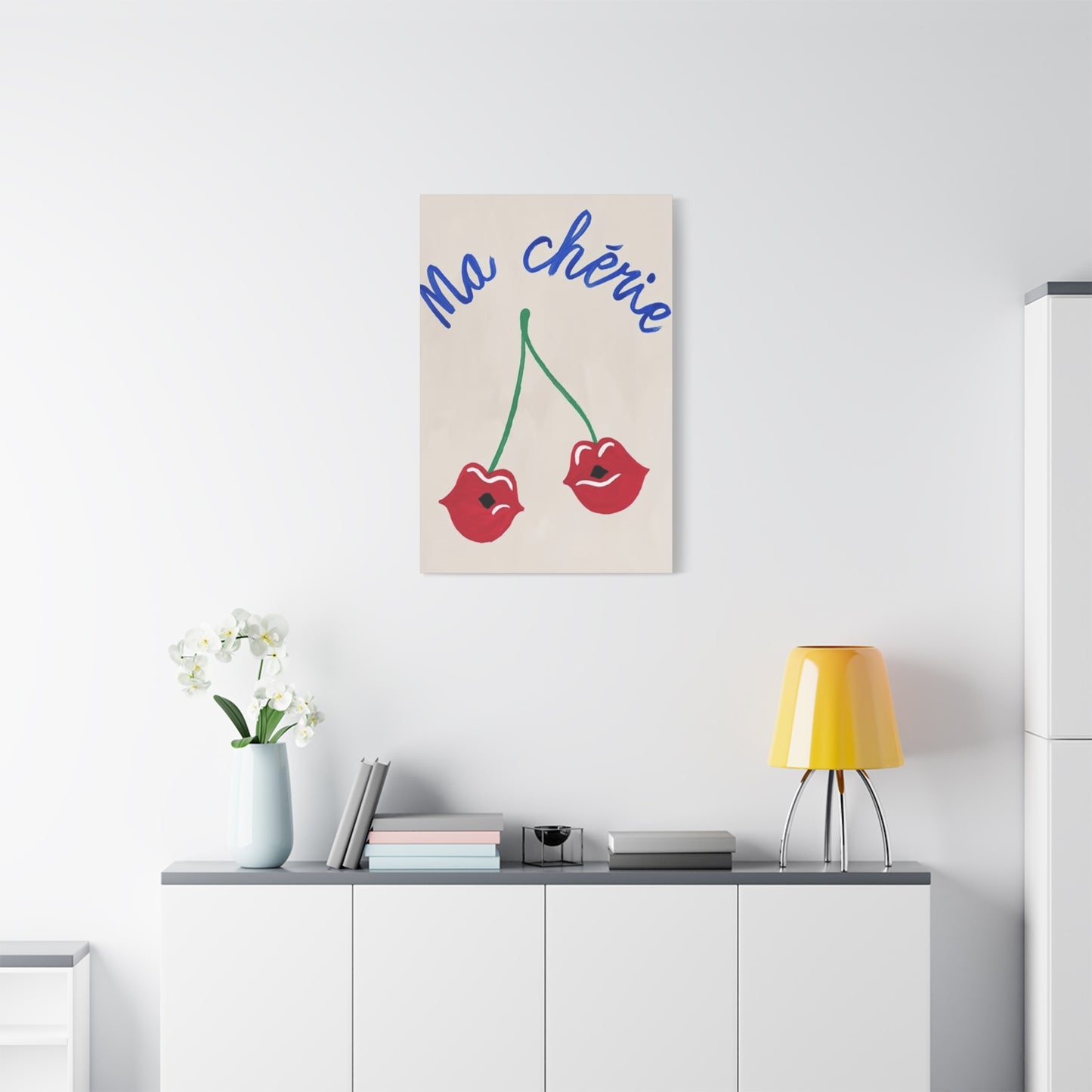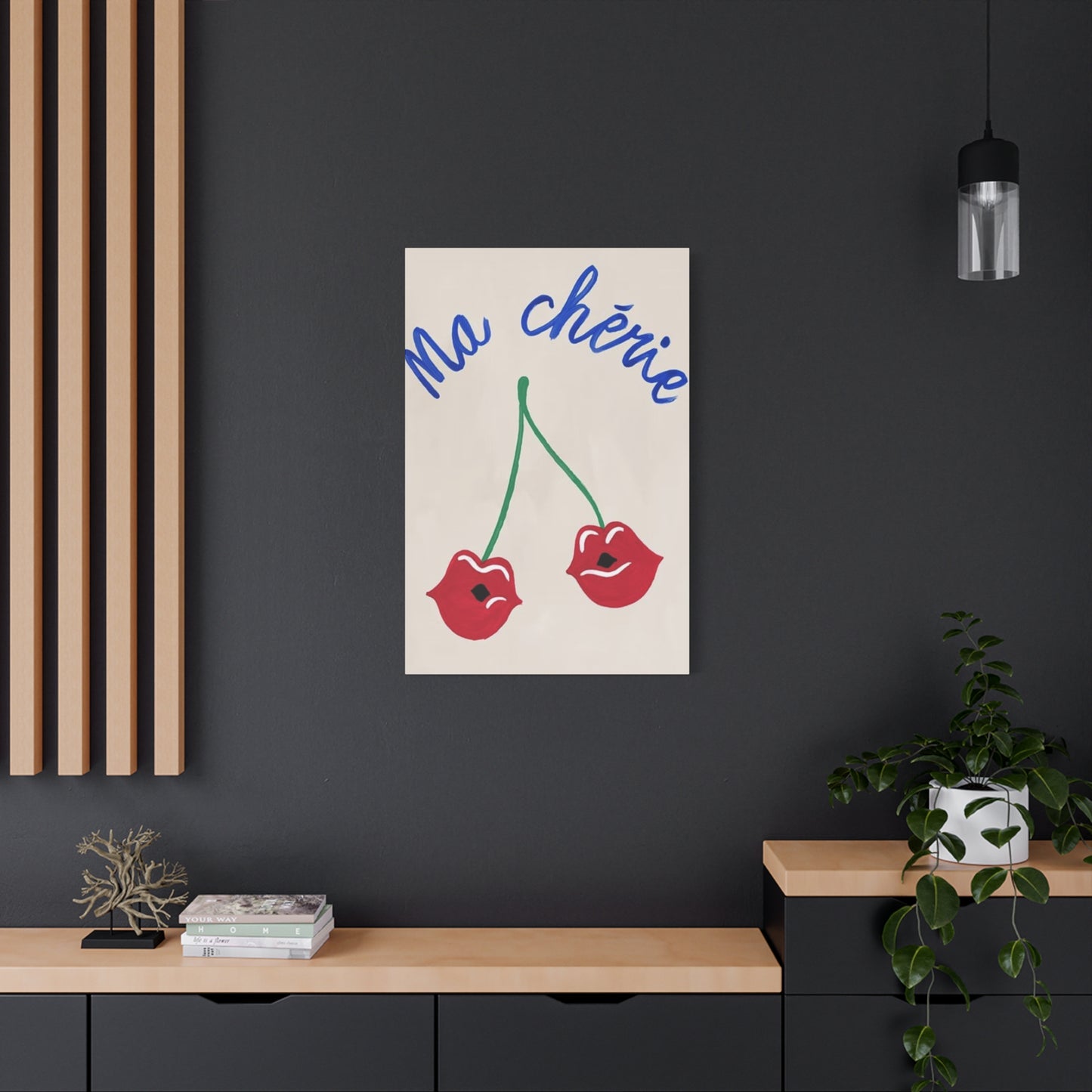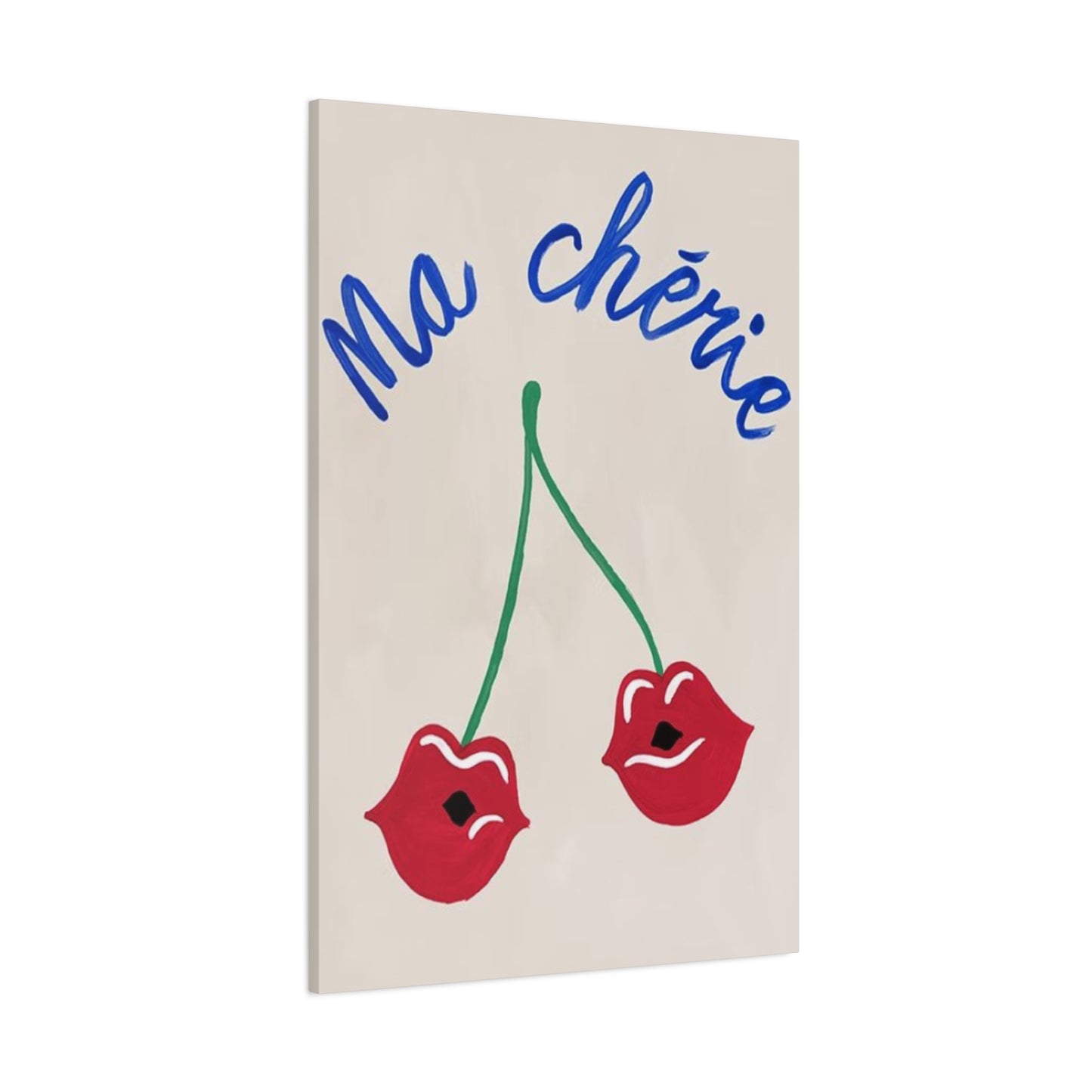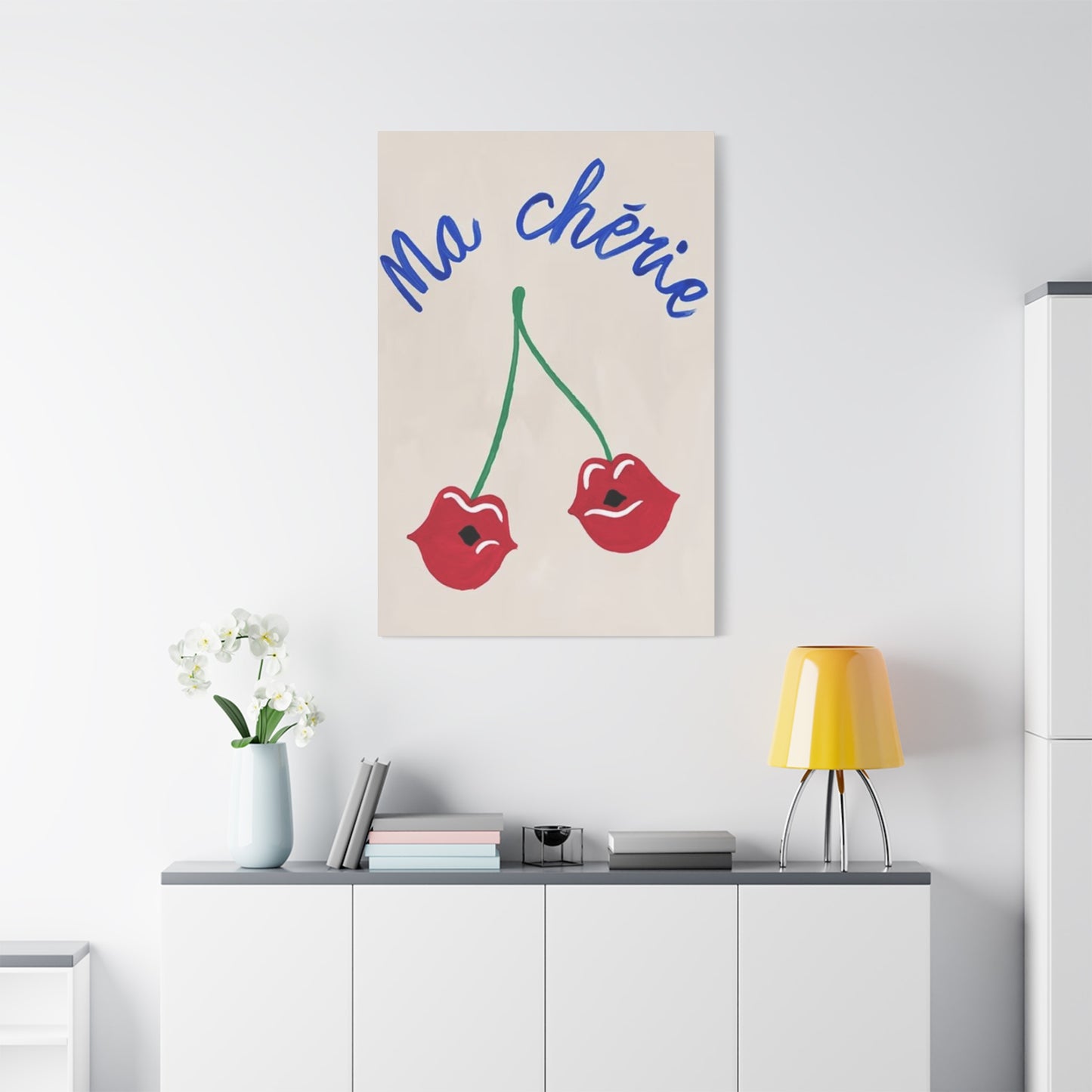The Bold Statement of Lips-Shaped Cherry Wall Art in Modern Interiors
The world of interior design has witnessed a fascinating evolution over the past decade, with contemporary art forms pushing boundaries and redefining how we perceive decorative elements in our living spaces. Among the most captivating trends that have emerged is the bold and vibrant aesthetic of cherry-themed mouth imagery combined with striking visual elements. This artistic movement represents more than just decoration; it embodies a cultural shift toward fearless self-expression, playful sophistication, and unapologetic glamour that transforms ordinary rooms into extraordinary experiences.
When we explore the intersection of fruit motifs and facial features in modern canvas creations, we discover a rich tapestry of symbolism, technique, and emotional resonance. The combination of crimson tones, glossy textures, and graphic sensibilities creates artwork that doesn't merely hang on walls but actively participates in the atmosphere of a space. This comprehensive exploration will take you through every aspect of this exciting artistic phenomenon, from its cultural roots to practical implementation in diverse interior settings.
The appeal of this particular style transcends traditional boundaries, speaking to multiple generations and aesthetic preferences simultaneously. Whether you're a minimalist seeking a single statement piece or a maximalist curator building an eclectic gallery wall, the versatility of cherry-infused mouth artwork offers endless possibilities. The visual impact of these pieces stems from their ability to balance contradictory qualities: they're simultaneously sweet and provocative, simple and complex, retro and futuristic, playful and sophisticated.
Understanding this art form requires examining its multiple dimensions. We must consider the psychological effects of color choices, particularly the various shades of red and how they influence mood and perception. The symbolic weight of cherries as motifs carries centuries of cultural meaning, from ancient associations with vitality and pleasure to modern representations of luxury and indulgence. Similarly, the representation of mouths in art has evolved from classical portraiture to contemporary abstraction, each iteration adding layers of meaning to this powerful visual element.
The technical aspects of creating and selecting such artwork deserve equal attention. Canvas quality, printing techniques, color saturation, and finish all contribute to the final impact of a piece. Digital art has democratized access to this style, allowing artists worldwide to contribute their unique interpretations while maintaining the core aesthetic that defines the genre. Traditional painting methods continue to coexist with modern approaches, offering collectors choices that range from affordable prints to investment-worthy originals.
Interior designers and homeowners alike have embraced this trend for its remarkable adaptability. A single piece featuring glossy crimson fruit paired with perfectly rendered mouth imagery can anchor an entire room's design scheme. The graphic nature of these works makes them particularly effective in spaces that might otherwise feel bland or impersonal. From urban lofts to suburban homes, from boutique hotels to creative office spaces, this artistic style has proven its universal appeal.
The commercial success of this aesthetic reflects broader cultural movements toward body positivity, sensuality without explicitness, and the reclamation of traditionally feminine imagery in empowering contexts. What might once have been dismissed as merely decorative has gained recognition as legitimate artistic expression that challenges viewers while remaining accessible and visually appealing. This balance between approachability and depth makes it ideal for both private collections and public spaces.
As we delve deeper into this topic, we'll examine twenty distinct aspects of cherry-themed mouth artwork, each offering unique insights into why this trend has captured imaginations worldwide. From historical context to future predictions, from DIY creation tips to professional curation advice, this comprehensive guide will equip you with everything needed to appreciate, select, and display these captivating works in your own environment.
Pop Seduction on Canvas
The concept of pop seduction in visual art represents a fascinating convergence of mid-century modern aesthetics and contemporary sensibilities. When we examine artwork that combines cherry motifs with mouth imagery, we're witnessing a direct lineage from the revolutionary artistic movements of the 1950s and 1960s, yet reimagined for today's design-conscious audience. The term seduction in this context refers not to anything inappropriate but rather to the compelling visual magnetism that draws viewers into the artwork, creating an immediate emotional and aesthetic connection.
Pop art emerged as a rebellion against the abstract expressionism that dominated galleries in the post-war period. Artists sought to elevate everyday objects and commercial imagery to high art status, challenging traditional notions of what deserved space in museums and collections. This democratization of art created a visual language that spoke to mass audiences rather than exclusive elite circles. The bold colors, clear lines, and recognizable subjects made art accessible while maintaining depth and commentary beneath the surface appeal.
When we apply these principles to contemporary canvas creations featuring cherries and mouths, we see a natural evolution of pop art philosophy. Cherries function as immediately recognizable symbols that carry multiple meanings simultaneously. They represent sweetness and pleasure in their most literal sense, evoking memories of summer, desserts, and childhood treats. On a deeper level, they've long symbolized temptation, luxury, and fleeting enjoyment. The fruit's perfect spherical form and vibrant coloring make it an ideal subject for graphic representation, allowing artists to create compositions that work both as realistic depictions and abstract color studies.
The mouth element introduces a human dimension that transforms these pieces from simple fruit studies into something far more complex. Throughout art history, the representation of mouths has carried significant weight. Unlike eyes, which we're accustomed to seeing in portraiture, an isolated mouth creates a different kind of intimacy. It suggests communication, taste, sensuality, and personality without revealing complete identity. This partial representation allows viewers to project their own interpretations onto the work, creating a participatory experience rather than passive viewing.
The technical execution of pop-style seduction artwork requires careful attention to several key elements. Color saturation plays a crucial role in achieving the desired impact. The reds used in these pieces typically lean toward either bright cherry tones or deeper crimson shades, each creating distinct emotional responses. Bright, saturated reds energize spaces and command attention, perfect for rooms where you want to stimulate conversation and activity. Deeper burgundy and wine tones offer sophistication and moodiness, suitable for more intimate settings like bedrooms or dining areas.
Contrast is another essential component of successful pop seduction pieces. The interplay between the glossy, three-dimensional appearance of cherries and the flat, graphic treatment of background elements creates visual tension that keeps viewers engaged. Many artists achieve this through strategic use of highlights and shadows, making cherries appear almost photographic while maintaining the overall graphic sensibility. This juxtaposition of realistic and stylized elements is a hallmark of contemporary pop aesthetics.
Composition in these works often follows principles borrowed from advertising and commercial design. The strategic placement of elements creates visual pathways that guide the viewer's eye through the piece. A cherry positioned near slightly parted lips, for instance, creates a narrative suggestion without explicit storytelling. The negative space around these primary elements often uses solid colors or minimal patterns, ensuring the focal points remain clear and impactful. This compositional clarity makes these pieces particularly effective in interior design, where artwork must compete with furniture, architectural elements, and other decorative objects.
The psychological appeal of pop seduction artwork lies in its ability to evoke pleasure without crossing into overtly provocative territory. These pieces celebrate beauty, color, and form in ways that feel joyful rather than aggressive. They invite viewers to appreciate aesthetic qualities without demanding deep philosophical contemplation. This accessibility makes them ideal for diverse settings, from professional offices seeking personality without controversy to homes where residents want art that sparks joy rather than requires interpretation.
Cultural context adds another layer to understanding pop seduction on canvas. In our current era, where social media platforms prioritize visual content and attention spans shrink, artwork that makes immediate impact has particular relevance. These pieces photograph beautifully, making them favorites for sharing on visual platforms. This shareability has contributed to their popularity, creating a feedback loop where digital exposure drives real-world demand. Artists creating in this style often consider how their work will translate to screen viewing, adjusting color palettes and compositions accordingly.
The commercial art market has responded enthusiastically to pop seduction aesthetics. Galleries that once focused exclusively on traditional or abstract works now regularly feature contemporary pop pieces. This shift reflects changing collector demographics, with younger buyers entering the market seeking artwork that reflects their aesthetic values. These collectors often prioritize visual impact and personal connection over investment potential or critical acclaim, valuing pieces that enhance their living environments and express their personalities.
Manufacturing techniques have also influenced the proliferation of pop seduction artwork. High-quality giclee printing allows faithful reproduction of original works at accessible price points, democratizing access to this aesthetic. Canvas printing technology has advanced significantly, producing textures and color accuracy that rival traditional painting methods. This accessibility means that apartment dwellers and homeowners alike can acquire museum-quality reproductions without museum-level budgets, further expanding the reach of this artistic style.
Interior designers have embraced pop seduction pieces as versatile tools in their creative arsenals. A single well-chosen canvas featuring cherry and mouth imagery can establish an entire room's color scheme and mood. The graphic nature of these works makes them particularly effective in spaces with clean lines and minimal ornamentation, where they provide necessary visual interest without overwhelming the environment. Conversely, in more eclectic spaces, they can serve as unifying elements that tie together disparate design choices through color coordination and thematic consistency.
Bold Lips, Juicy Vibes
The phrase bold lips, juicy vibes perfectly encapsulates a specific aesthetic that has dominated both fashion and interior design in recent years. This combination of confident mouth imagery with the fresh, organic appeal of fruit creates artwork that feels simultaneously empowering and approachable. Understanding why this particular pairing resonates so strongly requires examining both the individual components and their synergistic effect when combined on canvas.
Bold lip imagery in art has experienced a remarkable evolution over recent decades. Where earlier eras might have rendered mouths with subtle, naturalistic tones, contemporary artists embrace exaggeration and amplification. The lips in these works often feature high-gloss finishes, perfect symmetry, and colors that push beyond natural ranges into the realm of idealized beauty. This idealization doesn't necessarily represent unattainable standards but rather celebrates the transformative power of cosmetics and self-presentation. The mouth becomes a symbol of confidence, self-expression, and personal power.
The cultural context of bold lip imagery connects to broader conversations about beauty standards, femininity, and empowerment. Throughout history, painted lips have signified everything from moral corruption to aristocratic privilege to feminist rebellion. Today's bold lip art reclaims this symbolism, stripping away judgmental connotations and celebrating the aesthetic pleasure of vivid color and striking form. These representations acknowledge beauty rituals not as vanity but as legitimate forms of self-care and creative expression.
Juicy vibes introduce an organic counterpoint to the polished perfection of lip imagery. Cherries, with their natural gloss and vibrant color, bridge the gap between natural and artificial beauty. Their association with flavor and taste creates multisensory appeal that transcends purely visual experience. When viewers encounter artwork featuring cherries alongside mouths, they often report almost tasting the fruit, demonstrating how effective visual art can engage multiple senses simultaneously. This synesthetic quality makes these pieces particularly memorable and impactful.
The technical challenge of rendering juicy vibes on canvas requires sophisticated understanding of light, reflection, and texture. Artists must capture the translucent quality of cherry skin, the way light penetrates the fruit's surface to reveal deeper color beneath. They need to convey the taut firmness of fresh fruit while suggesting the burst of flavor that awaits. These technical considerations separate truly excellent examples of this genre from mediocre imitations. The best pieces achieve photographic realism in fruit rendering while maintaining the graphic sensibility that defines pop art aesthetics.
Color theory plays a crucial role in creating effective bold lips, juicy vibes artwork. The reds used must harmonize while offering enough variation to create visual interest. Cherry reds typically lean slightly toward orange, creating warm, inviting tones. Lip colors might range from blue-based crimsons to coral-inflected shades depending on the desired mood. The relationship between these reds determines whether a piece feels cohesive or chaotic. Skilled artists manipulate these subtle differences to create depth and dimension while maintaining overall color harmony.
Background choices significantly impact how bold lips and juicy elements read in composition. Neutral backgrounds allow the primary subjects to dominate completely, creating maximum impact for spaces where the artwork serves as the focal point. Alternatively, some artists introduce complementary colors like teals, pinks, or yellows to create more complex color interactions. These choices should reflect the intended installation environment, with bolder backgrounds suiting eclectic spaces and neutral grounds working better in minimalist settings.
The emotional resonance of bold lips, juicy vibes artwork stems from its celebration of pleasure and confidence. These pieces don't apologize for their vibrancy or their subject matter. They assert that beauty, color, and sensory pleasure deserve space and attention. This unapologetic quality makes them particularly appealing to individuals seeking to create living environments that reflect positive, life-affirming values. In spaces dominated by these works, residents and visitors alike often report feeling more energized and optimistic.
Marketing and social media have amplified the popularity of this aesthetic. The visual nature of platforms dedicated to image sharing means that artwork with immediate impact and photogenic qualities receives disproportionate attention. Bold lips, juicy vibes pieces excel in digital environments, maintaining their impact even when reduced to thumbnail sizes. This digital success translates to real-world demand, with collectors seeking pieces they've discovered through online channels.
The versatility of bold lips, juicy vibes artwork extends across multiple interior design styles. In modern spaces characterized by clean lines and minimal ornamentation, these pieces provide necessary visual interest and personality. In vintage or retro-inspired interiors, they connect to mid-century pop art traditions while feeling contemporary. Even in traditional settings, when properly scaled and framed, they can introduce welcome energy without creating jarring aesthetic conflicts. This adaptability makes them safe choices for design-conscious individuals who may change their decor over time.
Commercial applications of this aesthetic extend beyond residential interiors. Restaurants, particularly those focusing on desserts or cocktails, frequently incorporate bold lips, juicy vibes artwork to reinforce their brand identity and create Instagram-worthy environments. Beauty salons and cosmetics retailers recognize the natural connection between this imagery and their products, using such art to reinforce brand messaging. Even professional offices in creative industries have embraced this style as a way to signal innovation and contemporary thinking while maintaining appropriate workplace decorum.
The DIY and craft community has also embraced bold lips, juicy vibes aesthetics. Accessible art supplies and abundant online tutorials have enabled amateur artists to create their own interpretations of this style. While these homemade versions may lack the technical sophistication of professional works, they offer personal satisfaction and customization opportunities that mass-produced pieces cannot match. This grassroots participation has further spread the aesthetic, introducing it to audiences who might not typically purchase art.
Cherry Kiss Wall Décor
Cherry kiss wall décor represents a specific subcategory within the broader genre of fruit and mouth imagery in contemporary art. This particular combination evokes romance, sweetness, and playful sensuality through the pairing of iconic cherries with lips positioned as if preparing for or having just completed a kiss. The resulting imagery walks a careful line between innocent and suggestive, making it suitable for diverse spaces while maintaining visual interest and emotional impact.
The symbolic power of cherries in artistic representation cannot be overstated. Throughout Western art history, cherries have appeared in still life paintings, religious iconography, and allegorical works, each context adding layers to their symbolic vocabulary. In Renaissance paintings, cherries often symbolized the fruits of paradise or the sweetness of virtue. Dutch Golden Age still lifes featured cherries as symbols of ephemeral pleasure and the transience of earthly delights. Modern interpretations retain these associations while adding contemporary references to popular culture, fashion, and beauty standards.
The kiss itself holds universal significance across human cultures. It represents affection, romance, greeting, and celebration depending on context. By implying rather than explicitly depicting a kiss through positioning and composition, cherry kiss artwork invites viewers to complete the narrative in their imaginations. This participatory aspect creates stronger emotional connections than more literal representations might achieve. The suggestion of action engages viewers' minds, making them active participants in the artwork rather than passive observers.
Compositional approaches to cherry kiss décor vary widely among artists and styles. Some creators favor minimalist approaches, featuring a single cherry held near parted lips against a solid background. These stripped-down compositions rely on perfect execution of the few elements present, with any technical shortcoming immediately apparent. Other artists construct more elaborate scenes, incorporating multiple cherries, decorative elements, and complex backgrounds. These maximalist approaches offer more to explore visually but risk overwhelming the central concept if not carefully balanced.
The technical rendering of the kiss element requires particular skill. Lips must appear soft and inviting without crossing into inappropriate territory. Artists achieve this through careful attention to shape, shading, and expression. Slightly parted lips suggest anticipation and invitation, while maintaining innocence through lack of explicit detail. The challenge lies in creating imagery that reads as sensual without becoming overtly sexual, playful without seeming juvenile, and engaging without being provocative. Successfully navigating these distinctions separates effective cherry kiss artwork from failed attempts.
Color palette choices in cherry kiss wall décor significantly influence the mood and application of pieces. Traditional approaches emphasize natural cherry reds and pink lip tones, creating romantic, feminine aesthetics perfect for bedrooms, dressing rooms, or intimate dining spaces. Bolder interpretations might use neon pinks, electric blues, or unconventional color combinations to create more avant-garde effects suitable for contemporary lofts or creative office spaces. Monochromatic versions in blacks, whites, and grays offer sophisticated alternatives that work in minimalist or masculine interiors.
The cultural moment for cherry kiss imagery aligns with broader societal trends toward body positivity, self-care, and the celebration of pleasure. In contrast to previous eras that might have viewed such imagery as frivolous or inappropriate, contemporary audiences appreciate artwork that celebrates joy, beauty, and sensory experience. This shift reflects changing attitudes about the role of pleasure in well-lived lives, with increasing recognition that aesthetic enjoyment contributes positively to mental health and overall wellbeing.
Manufacturing and production techniques for cherry kiss wall décor have evolved dramatically with technological advances. High-resolution digital printing allows for reproduction quality that rivals traditional lithography at a fraction of the cost. Canvas stretching technology ensures gallery-wrapped edges that eliminate the need for traditional framing, reducing costs while creating clean, contemporary presentations. These production efficiencies have democratized access to quality artwork, allowing more people to acquire pieces that enhance their living spaces.
Interior designers employ cherry kiss décor strategically to achieve specific effects in various settings. In small spaces like powder rooms or entryways, a single bold piece creates impact without overwhelming limited square footage. In larger rooms, these works can anchor gallery walls or serve as counterpoints to more traditional artwork. The graphic nature of cherry kiss imagery makes it particularly effective in spaces with challenging architectural features like oddly placed windows or awkward alcoves, where the strong visual statement distracts from spatial imperfections.
The commercial market for cherry kiss wall décor spans a wide range of price points and quality levels. Mass-market retailers offer affordable prints suitable for temporary living situations or budget-conscious decorators. Mid-range options provide better print quality and canvas construction for those seeking more permanent installations. High-end galleries and artist studios offer original works and limited editions for serious collectors willing to invest in unique pieces. This market stratification ensures accessibility across different economic situations while maintaining aspirational elements for art enthusiasts.
Seasonal considerations influence the popularity and appropriateness of cherry kiss décor. The association between cherries and summer makes these pieces particularly popular during warmer months, with sales typically peaking in late spring and early summer. However, the romantic connotations of kiss imagery create year-round appeal, with Valentine's Day season representing another sales peak. Interior designers might rotate such pieces seasonally or incorporate them as permanent fixtures depending on climate and personal preference.
Playful Passion in Red
Playful passion in red artwork represents a sophisticated balance between two seemingly contradictory qualities: lighthearted fun and intense emotion. The color red itself embodies this duality, simultaneously representing love, anger, excitement, danger, and celebration across different cultural contexts. When artists successfully channel both playfulness and passion into red-dominated compositions featuring cherry and mouth imagery, they create works that resonate on multiple emotional frequencies, appealing to diverse viewers for different reasons.
The psychology of red in interior spaces has been extensively studied by researchers, designers, and color theorists. Red stimulates heart rate and creates feelings of urgency and excitement. In dining rooms, red tones reportedly increase appetite and encourage lingering conversation. In bedrooms, red can enhance romance and intimacy when used in appropriate saturation and quantity. However, excessive red in workspaces can create anxiety and distraction. Understanding these psychological effects helps in selecting and placing playful passion artwork appropriately.
Playfulness in art manifests through various techniques and compositional choices. Exaggerated proportions, unexpected juxtapositions, and elements of surprise all contribute to a playful reading. In cherry lip artwork, playfulness might appear through oversized cherries that dwarf realistic lip sizes, or through cartoon-like rendering that emphasizes graphic appeal over photorealism. Some artists incorporate text elements, witty titles, or visual puns that reinforce the playful interpretation. These lighter elements prevent the intensity of red from becoming overwhelming or oppressive.
Passion, conversely, requires depth and seriousness of execution to read authentically. Even in playful contexts, passionate artwork demonstrates commitment to craft, attention to detail, and emotional investment from the creator. In red-dominated pieces, passion might manifest through saturated color choices, bold compositional decisions, and willingness to push boundaries. The combination of passionate execution with playful subject matter creates productive tension that keeps viewers engaged and interested.
The technical challenge of working primarily in red tones lies in creating sufficient variation to maintain visual interest. Without careful attention to value and saturation differences, red-heavy compositions can appear flat and monotonous. Skilled artists introduce multiple shades within the red family, from pale pinks through orange-reds to deep burgundies and near-purples. They manipulate highlights, midtones, and shadows to create three-dimensional form and depth. These subtle variations separate masterful examples of the genre from amateur attempts.
Cultural associations with red vary globally, affecting how playful passion artwork reads in different contexts. In Western traditions, red strongly associates with Valentine's Day, love, and romance, making cherry kiss imagery particularly resonant. In many Asian cultures, red represents luck, prosperity, and celebration, lending festive qualities to red-dominated artwork. Middle Eastern traditions connect red with both hospitality and warning. Artists creating for international markets must navigate these varying associations, while those working for specific cultural audiences can leverage local symbolism for deeper meaning.
The historical context of red pigments adds another dimension to understanding playful passion artwork. Throughout art history, red pigments were among the most expensive and difficult to produce, making them markers of wealth and importance. Vermilion, carmine, and crimson lake required extensive processing from rare materials, limiting their use to significant subjects in commissioned works. Today's artists work with stable, affordable synthetic reds, but the historical weight of the color persists in viewer consciousness, lending gravitas even to playful contemporary interpretations.
Commercial applications of playful passion in red extend across numerous industries. Fashion retailers use such imagery to convey energy and trend-consciousness. Hospitality venues incorporate these pieces to create welcoming yet exciting atmospheres. Beauty brands recognize the natural connection between red cosmetics imagery and their products. Even healthcare facilities have begun incorporating carefully selected playful artwork to combat the sterile, intimidating atmosphere traditional medical décor can create.
The market for playful passion artwork has expanded significantly with the rise of online art platforms and social media marketing. Artists can now reach global audiences without gallery representation, while buyers can browse thousands of options from their devices. This democratization has increased both supply and demand, with more artists creating in popular styles while more buyers seek to personalize their spaces. The result is a vibrant, competitive market where quality and originality determine success more than traditional credentials or gallery connections.
Installation considerations for playful passion pieces require thoughtful planning. The intensity of red demands careful coordination with surrounding colors and furnishings. In rooms with neutral palettes, these works create dramatic focal points that anchor entire spaces. In already colorful environments, designers must ensure that reds harmonize rather than clash with existing hues. Lighting also significantly affects how red artwork appears, with warm lighting enhancing richness while cool lighting can make reds appear muddy or flat.
The emotional impact of living with playful passion artwork varies among individuals based on personality, lifestyle, and environmental factors. Some people find constant exposure to red energizing and motivating, reporting increased productivity and positive mood. Others may find intense red overwhelming over time, preferring to use such pieces in spaces occupied intermittently rather than primary living areas. Understanding personal responses to color helps ensure that artwork enhances rather than detracts from quality of life in decorated spaces.
Lips That Pop in Style
Lips that pop in style represents artwork where mouth imagery dominates the composition through strategic use of color, contrast, and compositional techniques borrowed from advertising and graphic design. These pieces don't merely feature lips as one element among many; rather, the mouth becomes the undeniable focal point, commanding attention and making bold statements about beauty, identity, and visual impact. Understanding what makes lips truly pop requires examining the intersection of artistic technique, design principles, and cultural context.
The concept of popping in visual design refers to elements that leap forward from their backgrounds, creating immediate visual hierarchy and drawing the eye irresistibly. Designers achieve this effect through several techniques: high contrast between subject and background, strategic use of complementary colors, sharp edges and clear definition, and proper scaling that ensures the subject occupies appropriate space within the composition. When applied to lip imagery, these techniques transform ordinary mouth representations into arresting visual statements.
Color selection plays the crucial role in making lips pop effectively. The classic approach uses bright, saturated reds or pinks against neutral backgrounds, creating maximum contrast and immediate impact. More sophisticated interpretations might use unexpected color combinations like purple lips against yellow backgrounds or orange-red mouths on teal fields. These unconventional pairings create visual excitement while requiring careful execution to avoid appearing garish or unbalanced. The key lies in maintaining sufficient contrast while ensuring colors harmonize rather than clash.
Lighting and highlight placement determine whether rendered lips appear flat and lifeless or three-dimensional and tactile. Professional artists study how light interacts with actual lips, noting where highlights naturally occur on the curves and contours. They observe how moisture creates small, bright reflections that suggest glossiness and vitality. By faithfully reproducing these lighting effects, artists create lips that seem almost tangible, inviting viewers to imagine texture and sensation beyond what two-dimensional media can actually provide.
The cultural significance of prominent lip imagery connects to contemporary conversations about beauty standards, cosmetics, and self-expression. Bold lip colors have cycled in and out of fashion over decades, with each era's preferred shades reflecting broader cultural values and attitudes. The current popularity of lips that pop artwork coincides with a beauty moment that celebrates bold color choices, artistic makeup application, and individualistic approaches to cosmetics. This artwork validates and celebrates these trends, positioning beauty rituals as legitimate forms of creative expression worthy of artistic representation.
Typography and text integration occasionally appear in lips that pop style artwork, adding layers of meaning beyond pure visual impact. Artists might incorporate phrases like kiss, luxury, glamour, or more conceptual text that creates dialogue with the image. When executed skillfully, text elements enhance rather than distract from the primary imagery. Poor integration, however, can make pieces appear amateur or overly commercial. The best examples use typography that complements the graphic sensibility of the lip imagery, creating unified compositions where all elements support the overall vision.
Scale considerations affect how lips that pop artwork functions in interior spaces. Oversized pieces where lips span several feet create dramatic, gallery-like effects suitable for spacious rooms with high ceilings. These large-scale works transform walls into statements, dominating spaces and setting moods. Medium-sized pieces work well in most residential settings, providing impact without overwhelming. Smaller works might serve as parts of gallery walls or accent pieces in intimate spaces like bathrooms or dressing areas.
The commercial evolution of lips that pop imagery reflects changing relationships between fine art, commercial art, and decorative objects. Earlier distinctions between these categories have blurred significantly, with contemporary artists freely borrowing techniques and aesthetics across traditional boundaries. Pop art itself emerged from this boundary-crossing impulse, and today's lip imagery continues that tradition. Whether a piece qualifies as fine art, commercial illustration, or decorative design matters less to contemporary audiences than whether it successfully enhances their living environments and expresses their aesthetic values.
Manufacturing quality significantly impacts the effectiveness of lips that pop artwork. Poor printing produces muddy colors, unclear details, and lack of the precise contrast necessary for true pop effect. Cheap canvas materials may sag or warp over time, distorting images. Inferior stretching techniques can create visible staples or uneven tension. Investing in quality production ensures that artwork maintains its impact over years of display, while cheap alternatives may require replacement after short periods.
Interior designers utilize lips that pop pieces as versatile tools for achieving specific effects. In minimalist spaces, they introduce necessary personality and color without violating the restrained aesthetic. In maximalist or eclectic rooms, they contribute to overall visual excitement while maintaining enough graphic clarity to read distinctly among competing elements. In commercial spaces, they create brand-appropriate atmospheres that signal values like modernity, confidence, and style-consciousness to customers and clients.
The social media lifecycle of lips that pop imagery demonstrates how digital and physical art markets increasingly intertwine. Artists create pieces with digital shareability in mind, knowing that online visibility drives sales. Buyers photograph their acquisitions for social platforms, providing free marketing while satisfying desires to share aesthetic choices with their networks. This cycle benefits artists willing to engage with digital marketing while potentially disadvantaging those who resist online presence despite artistic merit.
Modern Glam: Cherry Canvas Art
Modern glam cherry canvas art synthesizes multiple aesthetic traditions into a cohesive style that speaks to contemporary sensibilities while honoring decorative arts history. Glamour, derived from a Scottish word for magic spell, suggests enchantment, allure, and special qualities that elevate subjects beyond the ordinary. When applied to cherry-themed canvas art, glamour transforms simple fruit imagery into sophisticated statements about luxury, taste, and refined living. Understanding modern glam requires examining how historical glamour aesthetics adapt to contemporary contexts.
The golden age of Hollywood glamour in the 1930s through 1950s established visual conventions that continue influencing design today. High contrast black and white photography, dramatic lighting, polished surfaces, and attention to every visual detail characterized this era's aesthetic. Stars presented themselves as living artworks, with makeup, hair, and wardrobe carefully constructed to create specific effects. Modern glam cherry canvas art channels this legacy, applying similar principles of meticulous presentation and visual drama to fruit and decorative imagery.
Art Deco influences permeate much modern glam artwork, with its emphasis on geometric forms, streamlined shapes, and luxurious materials. Cherry motifs rendered in art deco style feature clean curves, symmetrical arrangements, and precise execution that suggests machined perfection rather than organic naturalism. Backgrounds might incorporate metallic elements, geometric patterns, or color blocking that references 1920s and 1930s design movements. These historical references create visual richness that purely contemporary approaches might lack.
The concept of luxury in modern glam cherry art extends beyond subject matter to encompass execution quality and presentation. Luxury materials might include canvas with especially fine weaves, archival-quality inks that ensure longevity, or genuine gold and silver leaf incorporated into compositions. Framing choices for modern glam pieces typically favor sleek metals, high-gloss finishes, or minimalist designs that let artwork dominate. Even affordable reproductions of modern glam pieces aim to convey premium quality through attention to finishing details.
Color palettes in modern glam cherry canvas art often feature unexpected combinations that create sophisticated rather than sweet effects. Cherries might appear in their natural red against backgrounds of deep navy, charcoal, or black rather than cheerful pastels. Metallic accents in gold, silver, or copper add luxurious touches. Some artists use monochromatic approaches where cherries appear in shades of gray, relying on form and composition rather than color for impact. These unconventional color choices signal sophistication and design awareness to viewers.
The symbolism of cherries gains additional dimensions within glamour contexts. Beyond their associations with sweetness and temptation, cherries in glamorous settings suggest exclusive pleasures, refined tastes, and access to luxury goods. A perfectly rendered cherry becomes not just fruit but an emblem of the good life, evoking images of champagne, fine dining, and sophisticated social occasions. This elevated symbolism makes modern glam cherry art particularly appealing to aspirational decorators seeking to create environments that reflect their aesthetic ideals.
Technical execution in modern glam pieces demands perfection or near-perfection. While playful pop art might embrace intentional imperfections or rough edges, glamour aesthetics require flawless finish. Every highlight must be precisely placed, every edge crisply defined, every color transition smoothly executed. This technical rigor challenges artists but also ensures that successful pieces possess the polish necessary for glamorous effect. Amateur or careless execution immediately undermines glamour, revealing the mundane beneath attempted elevation.
The market for modern glam cherry canvas art includes both residential and commercial buyers seeking specific atmospheric effects. Upscale restaurants and hotels incorporate these pieces to reinforce luxury positioning and create photogenic environments that guests want to share socially. High-end retail stores use modern glam art to establish brand identity and create shopping experiences that feel special rather than transactional. Residential buyers typically install modern glam pieces in spaces where they entertain guests or want to create personal sanctuaries of refined taste.
Contemporary minimalism and modern glam might seem contradictory, but they actually complement each other effectively in interior design. Both aesthetics value restraint, quality over quantity, and careful curation of elements. A single modern glam cherry canvas can satisfy minimalist principles by serving as the only decorative element in an otherwise spare space while providing the visual interest and personality that pure minimalism sometimes lacks. This compatibility explains the popularity of modern glam pieces among design-conscious urbanites living in space-limited environments.
Lighting design critically affects how modern glam cherry canvas art appears and functions in spaces. These pieces demand proper illumination to reveal their details and create intended effects. Track lighting, picture lights, or strategically placed accent lamps can highlight artwork while creating ambient atmosphere. Conversely, insufficient or poor-quality lighting can make even excellent modern glam pieces appear dull and lifeless. Interior designers often specify lighting as integral to installation rather than an afterthought.
The longevity of modern glam aesthetic suggests that cherry canvas art in this style represents sound investment for decorators. Unlike trendy styles that date quickly, glamour aesthetics have remained relevant across decades with only surface-level updates. A well-executed modern glam piece purchased today will likely remain stylistically appropriate for years or decades, making it more cost-effective than cheaper pieces requiring frequent replacement as trends evolve. This durability appeals to both practical decorators and serious collectors building lasting art collections.
The Sweet Side of Pop Art
The sweet side of pop art explores how a movement often associated with irony, consumer critique, and cool detachment can also celebrate pleasure, beauty, and genuine delight. While canonical pop artists like Andy Warhol and Roy Lichtenstein built careers on ambiguous relationships with their commercial subject matter, a parallel tradition embraced the joy and visual pleasure of popular imagery without ironic distance. Cherry-themed artwork within this tradition openly celebrates sweetness, both literal and metaphorical, inviting viewers to enjoy rather than intellectually deconstruct.
Pop art emerged in the 1950s as a reaction against abstract expressionism's seriousness and emotional intensity. Early pop artists turned to advertising, comic books, and consumer products for subject matter, finding visual richness in sources previously considered unworthy of artistic attention. This democratizing impulse expanded what could legitimately appear in galleries and museums, challenging hierarchies that elevated certain subjects while dismissing others as trivial or commercial. Cherry imagery fits perfectly within this expanded vocabulary, transforming everyday fruit into worthy subjects for sustained artistic attention.
The sweet dimension of pop art acknowledges that not all artistic statements require criticism or subversion. Sometimes artists and viewers simply want to celebrate what they find visually appealing or emotionally satisfying. Cherry artwork embraces this possibility, presenting fruit imagery.
Conclusion
Lips-shaped cherry wall art makes a bold and captivating statement in modern interiors, seamlessly blending playfulness with sophistication. This distinctive art form challenges traditional décor conventions by introducing a striking focal point that commands attention and sparks conversation. Its unique shape and vibrant color bring a lively yet elegant energy, making it a perfect complement to contemporary design aesthetics that value originality and bold expression.
The visual impact of lips-shaped cherry wall art lies in its ability to evoke emotion and personality within a space. The bright reds and glossy finishes often associated with this motif add warmth and passion, creating an inviting atmosphere that balances both fun and refinement. In modern interiors where minimalism often dominates, such bold artwork acts as an eye-catching accent that injects character and flair without overwhelming the space.
Beyond its aesthetic appeal, this type of wall art symbolizes more than just visual delight; it reflects a playful embrace of creativity and self-expression. The lips and cherry imagery conjure themes of sensuality, vitality, and a touch of whimsy, which resonate deeply in personal and social spaces alike. By incorporating this artwork, homeowners and designers showcase a willingness to experiment with design elements that challenge the ordinary, fostering environments that are both stylish and meaningful.
Moreover, lips-shaped cherry wall art is versatile enough to adapt to various interior styles, from sleek modern apartments to eclectic living rooms. Its bold presence can harmonize with monochromatic palettes or stand out amidst more vibrant décor, making it a dynamic addition that enhances overall design coherence. This adaptability ensures that the artwork remains relevant and impactful, regardless of changing trends.
Ultimately, the bold statement made by lips-shaped cherry wall art embodies the spirit of modern interior design—one that celebrates individuality, creativity, and visual storytelling. It transforms ordinary walls into expressive canvases that reflect personality and inspire engagement. By choosing such striking pieces, spaces come alive with color, attitude, and charm, leaving a lasting impression that is both artful and unforgettable.

















